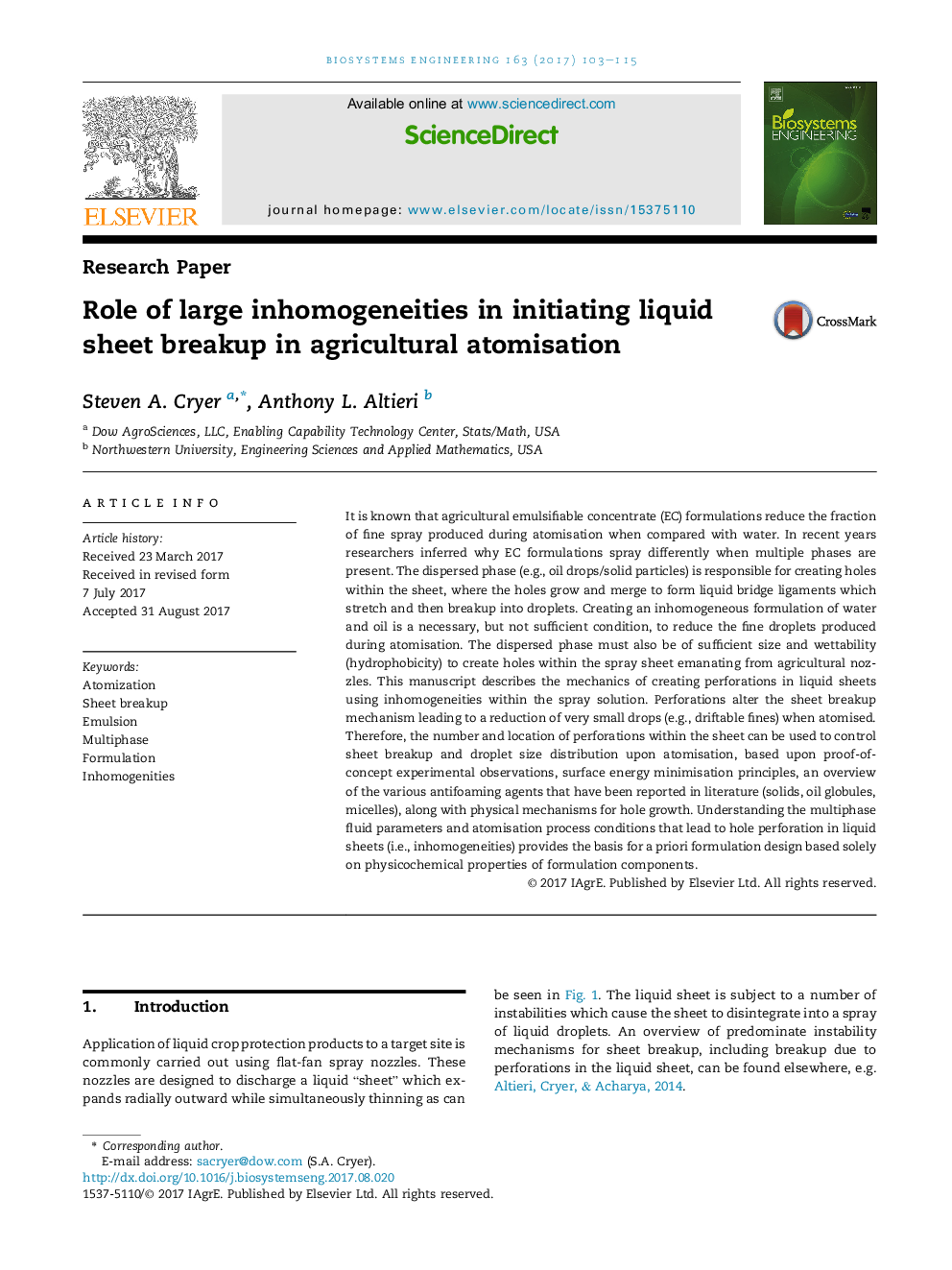| Article ID | Journal | Published Year | Pages | File Type |
|---|---|---|---|---|
| 5471836 | Biosystems Engineering | 2017 | 13 Pages |
Abstract
It is known that agricultural emulsifiable concentrate (EC) formulations reduce the fraction of fine spray produced during atomisation when compared with water. In recent years researchers inferred why EC formulations spray differently when multiple phases are present. The dispersed phase (e.g., oil drops/solid particles) is responsible for creating holes within the sheet, where the holes grow and merge to form liquid bridge ligaments which stretch and then breakup into droplets. Creating an inhomogeneous formulation of water and oil is a necessary, but not sufficient condition, to reduce the fine droplets produced during atomisation. The dispersed phase must also be of sufficient size and wettability (hydrophobicity) to create holes within the spray sheet emanating from agricultural nozzles. This manuscript describes the mechanics of creating perforations in liquid sheets using inhomogeneities within the spray solution. Perforations alter the sheet breakup mechanism leading to a reduction of very small drops (e.g., driftable fines) when atomised. Therefore, the number and location of perforations within the sheet can be used to control sheet breakup and droplet size distribution upon atomisation, based upon proof-of-concept experimental observations, surface energy minimisation principles, an overview of the various antifoaming agents that have been reported in literature (solids, oil globules, micelles), along with physical mechanisms for hole growth. Understanding the multiphase fluid parameters and atomisation process conditions that lead to hole perforation in liquid sheets (i.e., inhomogeneities) provides the basis for a priori formulation design based solely on physicochemical properties of formulation components.
Related Topics
Physical Sciences and Engineering
Engineering
Control and Systems Engineering
Authors
Steven A. Cryer, Anthony L. Altieri,
